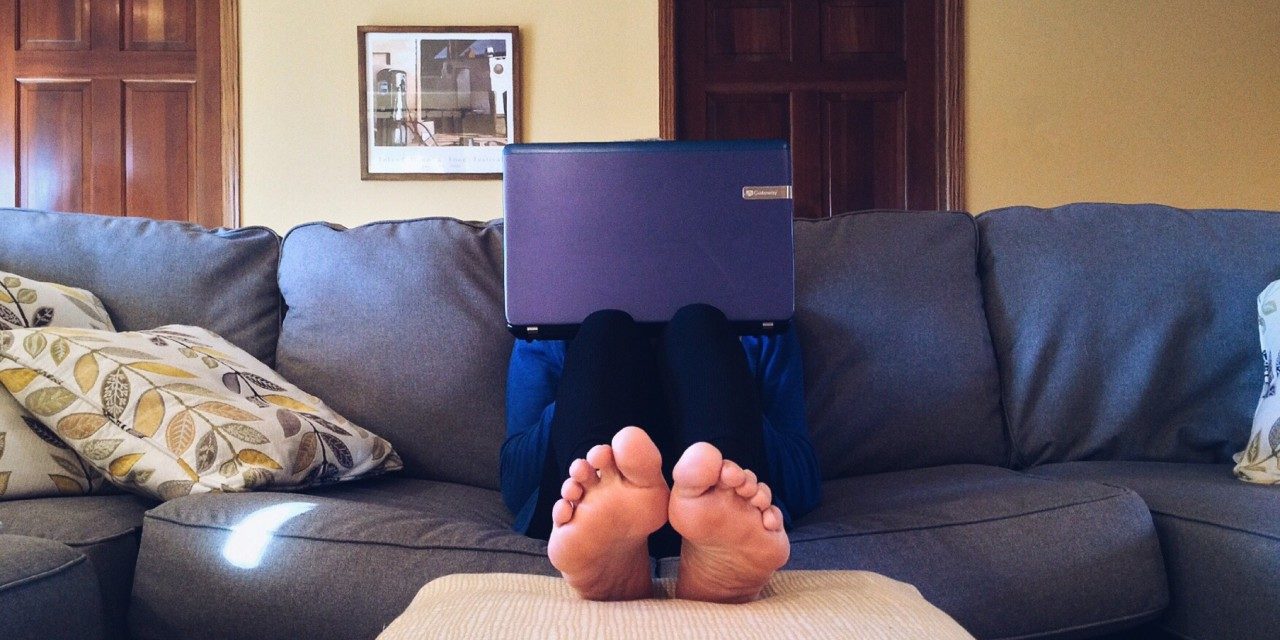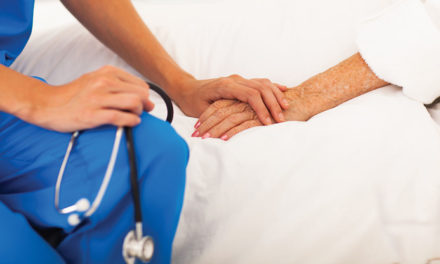With many companies instituting work-at-home policies to prevent the spread of COVID-19, people are finding themselves in familiar places that are aren’t necessarily ideal for working.
Working from home offers the luxury of not worrying about what to wear, when to take a break, which chair to sit in, and taking the dogs for a walk. However, as Joseph Baumgarden DPT, Cert MDT, a Catholic Health rehabilitation manager, noted, many people may become too comfortable and do things that may be more harmful in the long run.
“For most, the day starts off routine … a cup of coffee, relaxing in a comfortable chair with their feet up and laptop on their legs. Fast forward a few hours later and the individuals stand up to use the restroom. Their feet and legs are numb. They can’t feel the floor.
Others may find themselves using their bed as their office space, gradually slumping. This leads stiffness and discomfort, turning from turning head to the sides or looking up.”
Hopefully these issues are temporary and only last briefly. But, long terms they may contribute to pain and discomfort.
Tips for Avoiding Stress & Strains
Baumgarden offers some tips to help limit unnecessary stress and strains on the body.
1 Sit in a chair with enough support. Sofas and recliners are comfortable for a short time, but not a great choice for longer periods of time. Make sure the chair has a firm seat. Feet should be flat on the floor with thighs near parallel to the floor. There should be about four inches between the back of your leg and the front of the seat. Also consider adding a small towel roll or pillow to the small of your back to maintain the natural curve in your spine.
2 The computer monitor should be positioned in front of your eyes, about 20-30” away. If you are unable to adjust your seat height, you may be able to use a small table-top platform to raise your monitor/laptop if necessary. Your shoulders should also be relaxed and ideally, the keyboard should be positioned about 1” above your elbows.
3 Take a break every 30 minutes or so to stand up and stretch. Walk around for about five minutes or so. This is a great time to play with pets or take them outside. This will also help prevent any faulty postures from developing for a prolonged period of time. It can also help with circulation and digestion, and perhaps help to clear your mind and refocus on your tasks.
Ways to Stretch Out
Below are some examples of stretches you may perform throughout the day. The frequency depends on you, but it is still a good idea to get up and move around every 30 minutes or so.
➡️ Either sitting up straight or standing, keep your eyes staring straight ahead and pull your chin straight backwards as if you were sliding it off a ledge. Try 10 repetitions.
➡️ While standing, bend your elbow and have your hands in front of your shoulders. Then gently squeeze your shoulder blades together. Try 10 repetitions.
➡️ Hold one hand straight out in front of you, making sure your elbow remains straight. Using your other hand, pull your outstretched fingers and hand upward and back towards you. Hold for a few seconds. Try 10 on each side.
➡️ From the same position as the stretch above, pull your fingers and hand down towards the floor. Hold for a few seconds. Try 10 on each side.
➡️ While standing, lock your fingers together and gently reach overhead, stretching your shoulders, back, and ribs. Hold for a few seconds. Then, while in the same position with your arms overhead, try leaning to each side for a different stretch. Hold for a few seconds. Try 10 on each side.
➡️ While standing, place both hands on your lower back with your feet shoulder width apart. Gently bend backwards. Hold for a few seconds, and try 10 repetitions.
➡️ Stand about an arm’s length away from a wall. Place one foot behind you as far as you can go comfortably while keeping your heel on the ground and your toes straight ahead. Gently lunge forward so you feel a stretch in the calf of your back leg. Hold for a few seconds and try 10 repetitions. Be sure to repeat on the other side.
You may also perform this stretch by keeping your heels flat and placing the balls of your feet on an object so they are raised about 1-2 inches off the floor. Be sure to hold onto a chair or wall for balance and support.
What if the pain doesn’t go away after stretching?
When pain persists, it may be time to consider working with a physical therapist. For more information about Catholic Health’s outpatient rehabilitation programs, call (716) 447-6205.
Learn More About Our Physical Therapy Programs
Call (716) 447-6205
Learn More About Our Physical Therapy Programs
Call (716) 447-6205





